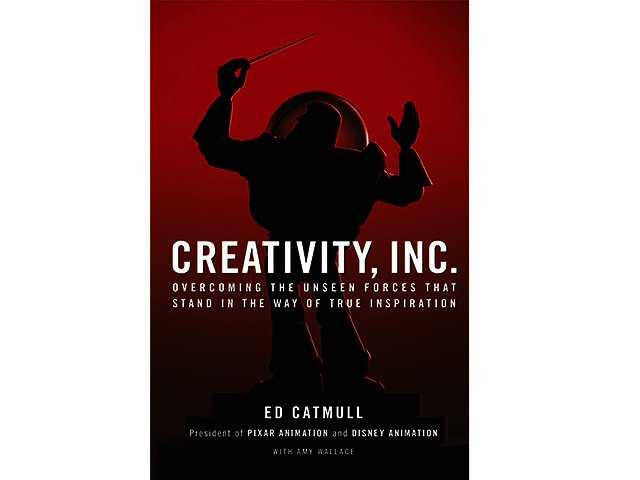It’s not very often that you come across a virtual goldmine of inspiration, but Creativity, Inc. along with being an entertaining read, is also a rich reservoir of business insight.
While Creativity, Inc., written by Ed Catmull, the president of Pixar Animation and Disney Animation, tells the story of the rise of Pixar in an entertaining and engrossing way, it does much more. The book offers business leaders, managers, and creatives alike valuable insight into what makes and breaks companies, what keeps creativity and inspiration flowing, and most importantly, the principles creative businesses need to be aware of to succeed.
One business mistake debunked early on is the concept of hierarchies, as Catmull relates how something as simple as the shape of a table, and assigning degrees of importance to employees seated at that table, actually impedes some of the most valuable innovations and ideas coming to the fore. For example, once the company got rid of a long, narrow table around which meetings were held, in favour of a more inclusive square one, this fostered greater inclusiveness – and new ideas were able to emerge.
Truthfully speaking
Another of the key principles touted at Pixar is that of honesty, and even more, candour, with Pixar encouraging the latter in particular. Catmull also noted that “a hallmark of a healthy creative culture is that its people feel free to share ideas, opinions and criticisms.” What’s more, he also asserted that a lack of openness ultimately leads to dysfunctional environments. This is contrary to many hierarchical organisations, where speaking your mind, especially to someone higher up in the organisation, is a no-no.
In Pixar’s case, it implemented this principle of candour with its Braintrust meetings, a tradition in which it would “put smart, passionate people in a room together and charge them with identifying and solving problems.”
Risk change
As one reads the book, one thing becomes abundantly clear – Pixar had its ups and downs and its fair share of changes and uncertainties. However, and possibly our favourite takeaway given the current economic climate and growth of uncertainty facing all businesses, is Pixar’s approach to risk. Rather than being risk averse, its culture revolved around making it safe to take risks, where even failure was seen and valued as being part of the process.
If you are in business, a manager or just working in a creative industry, get Creativity, Inc. and read it slowly. You won’t be sorry. RRP: R315.
Top 3 Management Tips*
1. Managers should protect new ideas from those who don’t understand that in order for greatness to emerge, there must be phases of not-so-greatness. Protect the future, not the past.
2. When looking to hire people, give their potential to grow more weight than their current skill level. What they will be capable of tomorrow is more important than what they can do today.
3. Change and uncertainty are part of life. Our job is not to resist them but to build the capability to recover when unexpected events occur. If you don’t always try to uncover what is unseen and understand its nature, you will be ill prepared to lead.
Top 5 Creative Tips*
1. The desire for everything to run smoothly is a false goal – it leads to measuring people by the mistakes they make rather than by their ability to solve problems.
2. Failure isn’t evil, it is a necessary consequence of doing something new.
3. There is nothing quite as effective when it comes to shutting down alternative viewpoints, as being convinced you are right.
4. Don’t wait for things to be perfect before you share them with others. Show early and show often.
5. Give a good idea to a mediocre team and they will screw it up. Give a mediocre idea to a great team, and they will either fix it or come up with something better. If you get the team right, chances are that they’ll get the ideas right.
*Excerpted from Creativity, Inc.





